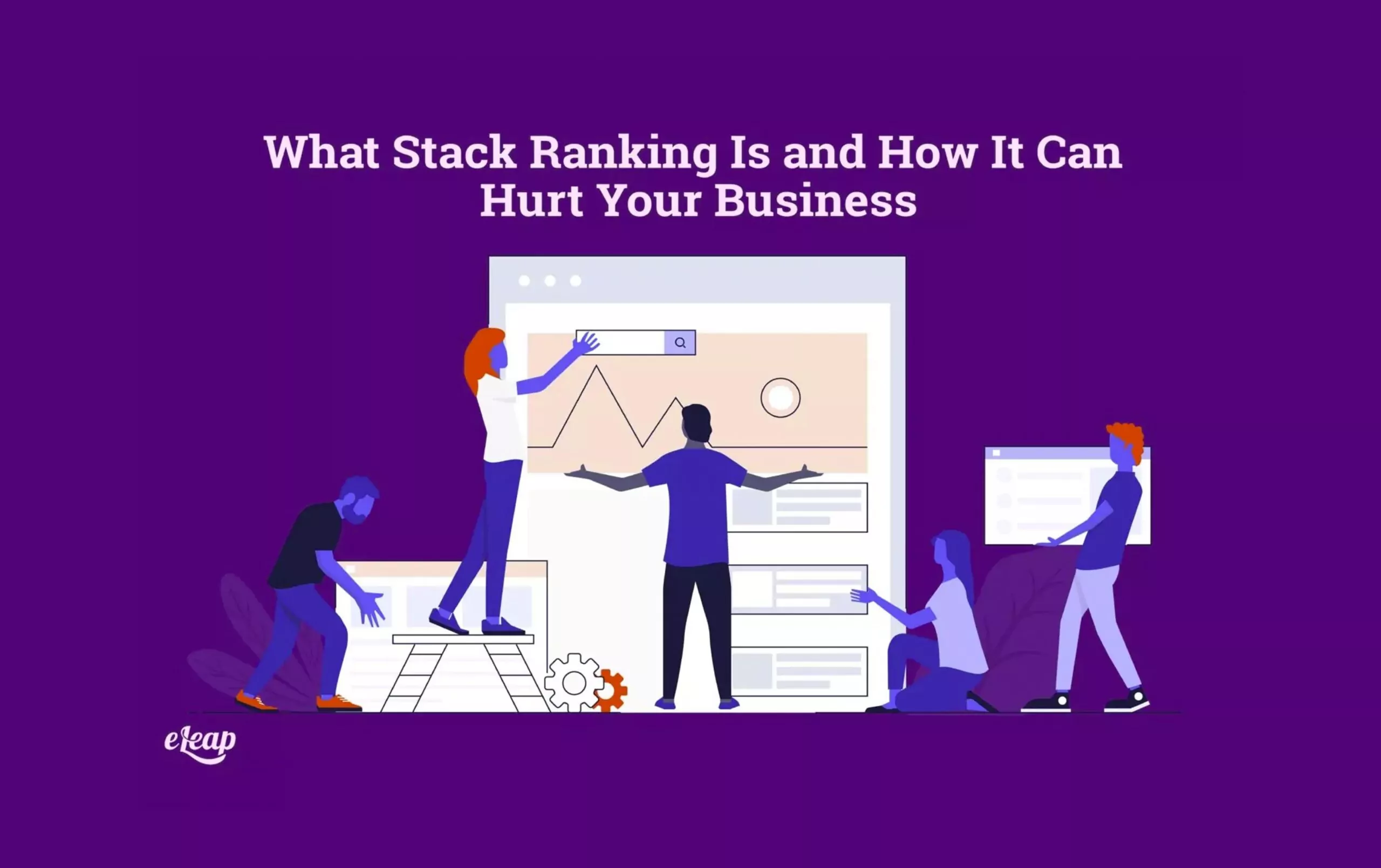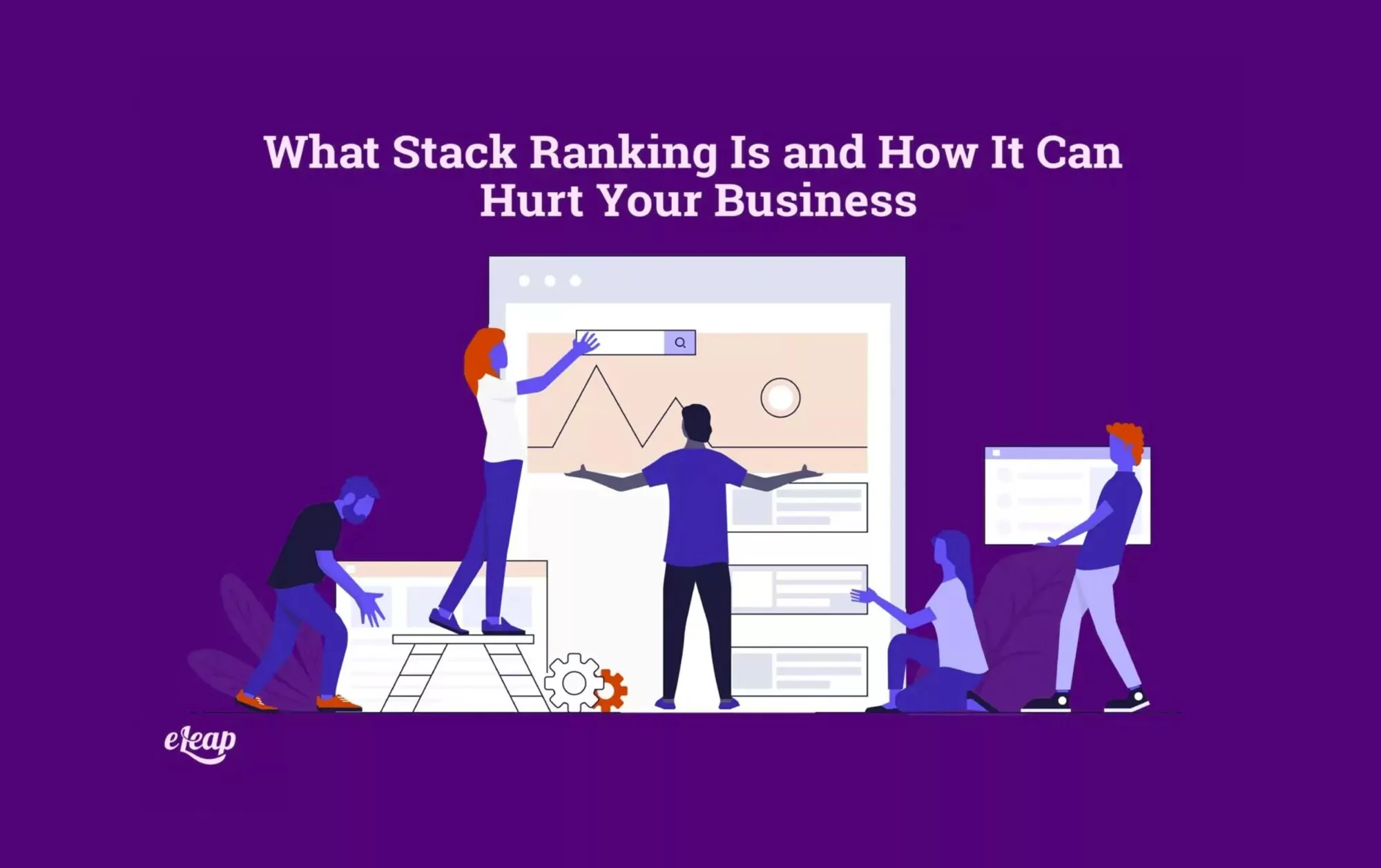What Stack Ranking Is and How It Can Hurt Your Business

If you know anything about company structure, you’ve probably heard the term “stack ranking.” But what does this mean and why is it often detrimental to a thriving business? No matter what type of business you run or what your industry is, there is probably some type of hierarchy within your employees. Hierarchies help keep order and give people an understanding of their place on the company ladder and where they should turn when they need help. However, when promotion and leadership are more of a popularity contest than they are about real accomplishments and metrics, it can create discontent and frustration among the team. Let’s learn more about stack ranking, how it happens, and how to prevent it from becoming the norm in your office.

How Stack Ranking Became Common
If you took statistics in high school or college, you’re familiar with the bell curve. This is a statistical distribution in which things (or people) are ranked from highest to lowest. Within management and employment, this is often looked at as employees ranking as exceptional, average, or in need of growth.
This can be a struggle, though, when in a certain group of people everyone does well and then certain sections of the team are pushed toward the bottom, even when they did what they were supposed to do. Remember when you were in school and your teacher or professor would tell you that the class or a certain test would be graded on a curve? This was often met with sighs of relief if everyone in the class felt that no one would do well, because it allowed everyone to score a little higher than they would have just based on the proportions of right or wrong answers. However, if one person scored off the charts then it would skew the entire group’s results. In employment management, too, it can often present difficulty when everyone is meeting the expectations set but some people still “need” to rank higher than others to meet the stack ranking qualifications.
Stack ranking, when used in a typical bell curve fashion, usually puts those ranking above expectations as the top 15% of performers. To create the mirror curve, those that need improvement are the bottom 15%, and the remaining 70% are in the middle, or at an accomplished level.
Many behemoth companies used to use this structure and then turned away from it when they saw the toxicity that it created as well as the constant employee turnover rate and lack of teamwork, each of which comes with its struggles.
The Dangers of Stack Ranking
Using a hierarchical system like this can motivate people to work harder, as they want to be in the top tier, if not the majority second level. However, some people might feel that no matter how hard they work, they can’t compete with those who work harder (or have naturally better stills, resources, or connections). It could also mean that team members, instead of collaborating and trying to encourage each other to succeed, are more likely to throw each other under the proverbial bus to ensure a place anywhere but in the bottom section of the bell curve.
Stifled Teamwork
Stack ranking can often hinder a company from moving forward ahead of its competition because people aren’t willing to collaborate. With regard to teamwork, the sum of people’s knowledge is more than the parts. However, if people are always wondering who will be the person that beats them out of the spot for their job, they are less likely to share their expertise and co-create.
Take the example of Microsoft, Apple, and Google, three of the biggest giants in the technology and Internet industry. Apple and Google grew, developed, and changed along with the times. However, despite having the same resources and backing as the other two, Microsoft didn’t follow suit. Why? Some people attribute the lack of forward momentum to their culture of stack ranking.
When people are always competing with each other, they are more likely to try and differentiate themselves from the crowd and stand out on their own rather than work together to benefit the company as a whole.
Low Retention/High Turnover Rate
It might seem like common sense to get rid of the bottom-performing section of your team. However, those people are inevitably going to be replaced with new hires who need to be recruited, onboarded, trained, and shown the ropes. This takes money, time, and intellectual labor. When energies are constantly being placed on bringing in new employees, that brings attention away from developing and guiding the ones that are continuing to stick it out in your business’s environment.
Investing in the employees you have is often more beneficial to your company and your management team than getting rid of the bottom few and “trying again,” as it were. Some reports even show that constant turnover can cost up to twice as much as the struggling employee’s salary.
This isn’t to say that managers should just be complacent and shrug their shoulders when employees aren’t up to snuff. However, it can be more beneficial (financially and in the company culture as a whole) to encourage, lead, and guide those employees toward growth and success rather than let the team members go and start again.
Culture of Discontent and Competition
No one wants to get up each day and go to work in a place where they feel as if they’re constantly on edge, always being compared to others, and where their successes are only looked at in light of what others are doing.
When stack ranking is the norm, people fear feedback, get anxiety about annual performance reviews, and are always watching their backs. They are constantly wondering if their job is on the line, and even if they do end up working with other team members on a project or helping guide others toward success, most people are more than willing to step on the back of someone else if it means keeping their job, especially when there is a recession happening and employment is at a premium.
Another struggle in a company whose culture is based around stack ranking is being “in with the boss.” Performance reviews, especially when they aren’t largely based on self-evaluations, can often feel biased based toward the manager’s attitude or relationship with a certain employee. Stack ranking is meant to be objective and to bring people further toward the top who have worked hard and accomplished more than most, but the truth is that it often becomes subjective; those in the top exemplary section of the curve are the ones who simply get along best with the management.
The Alternative to Stack Ranking
Instead of ranking everyone in your office compared to each other, try comparing them to themselves and their individual goals. Annual performance reviews should be about each unique employee and their strengths, goals, and areas of improvement concerning their place in the company. There is plenty of motivation to improve, especially when one’s management is willing to give them resources to improve.
Letting go of stack ranking also simplifies company policy and allows for leeway when trying to help employees obtain their potential. Most managers don’t wake up saying, “Ah, yes, today I can’t wait to fire 10 of the people who have worked so hard for me over the past year.” Instead, doesn’t it seem much more efficient and positive to be able to say to people, “Here are the areas where we need to see you grow. We have these resources in place that can help you get there. Let’s set a goal for where we both think you could be next year, touching base on progress every couple of months.”
Moving Ahead to Something Better
Even if this was a common way to run a business in past decades, it doesn’t have to be the way of the future. As the common saying goes, “When you know better, you do better.” There are plenty of opportunities to praise innovation, creativity, and motivation and value each employee for their unique strengths and abilities while still expecting a community of improvement and growth.
Companies who embrace flexibility, offer professional development and growth opportunities. And challenge their employees with support and scaffolding find that not only are their team members willing to take risks and try new ideas. But that they create communities in which people encourage and help one another, share knowledge, and experience, and bring questions to their superiors without fear of retribution.
This type of culture doesn’t just improve the struggling employees, but the ones on top as well. As the manager, you don’t have to take on the task of guiding and leading the employees who need help. Instead, utilize the strengths you have in your veteran team members. They can share their knowledge, help others grow, and create systems for efficiency, productivity, and profit. All of this together is much more likely to bring your business toward success.